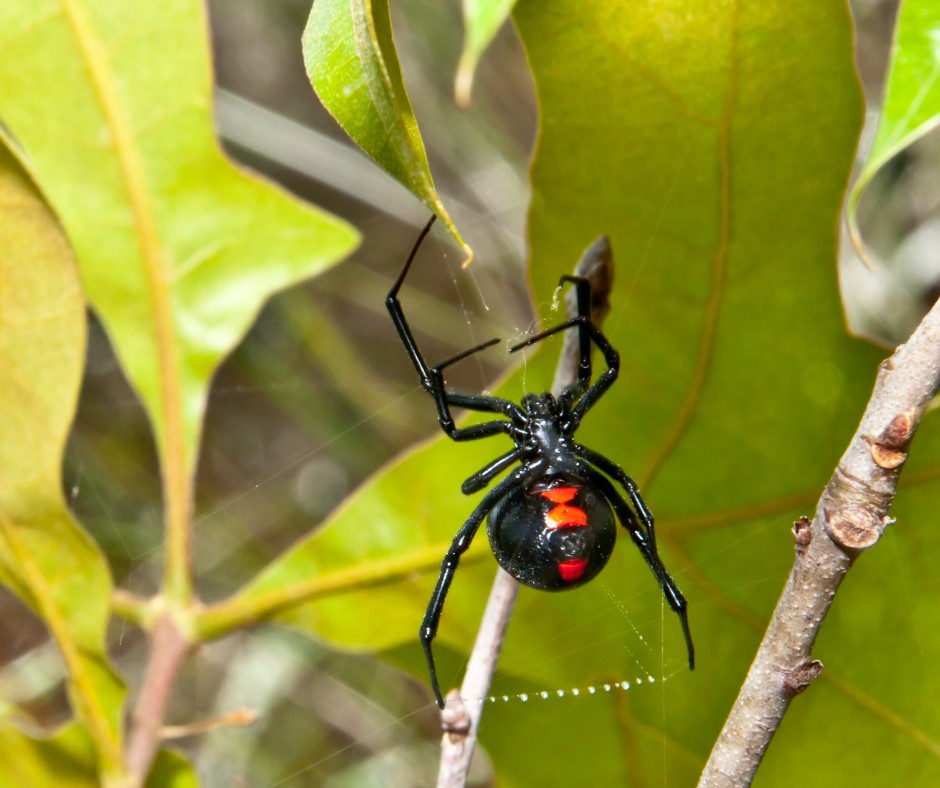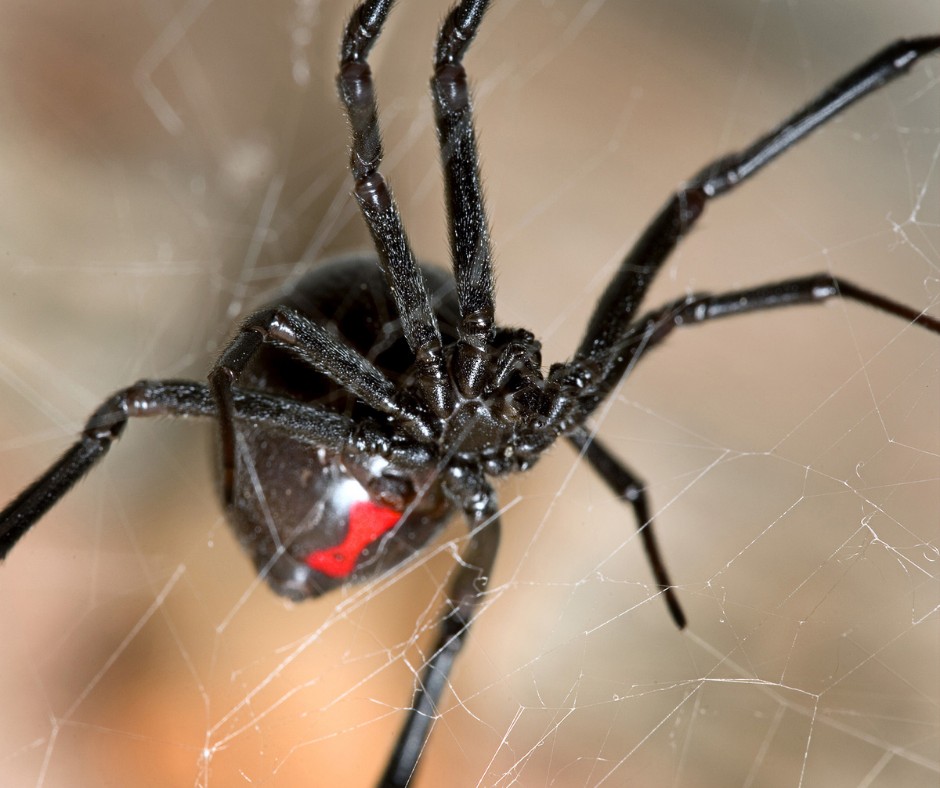
More Pest ID
- Acrobat Ants
- American Cockroach
- American Dog Tick
- Argentine Ants
- Asian Roach
- Bed Bugs
- Big Headed Ant
- Black Legged Tick
- Brown Banded Roach
- Brown Dog Tick
- Brown Widow Spider
- Cellar Spider
- Crazy Ant
- Dry Wood Termites
- Elongated Twig Ant
- Fire Ants
- Florida Carpenter Ants
- Florida Woods Roach
- Formosan Termites
- German Roach
- Ghost Ants
- Jumping Spider
- Little Yellow Ant
- Lone Star Tick
- Oriental Roach
- Pavement Ants
- Pharaoh Ants
- Pyramid Ants
- Rover Ant
- Smokybrown Roach
- Subterranean Termites
- Thief Ant
- White-Footed Ant
- Wolf Spider
- Yellow Sac Spider
Did you know the most venomous spider in North America is the black widow spider? They are highly poisonous, and their venom is 15 times more potent than that of a rattlesnake. A bit from a black widow can cause severe muscle pain and spasms, and abdominal cramping for an entire week. And more than 2.000 people report bites each year. However, death from a widow bite is rare these days.
Identification is the first step in elimination. If you are unsure you have a black widow, read this Pest ID page. Then, call Drive-Bye Exterminators to get rid of the widows for you safely.
Identifying the Black Widow Spider
A few familiar names for the black widow spider are Widow Spider, Shoe Button Spider, Hourglass Spider, Cobweb Spider, Comb-footed Spider, Tangle-web Gumfoot-web Spider, Button Spider. But no matter what you call this spider, they are a problem if they are on your property.

Black Widow Spider Appearance
Primary colors for the black widow spider are black, white, red, and orange. The underside of its abdomen has a bright red or orange hourglass-shaped marking. And the back of the abdomen can have white stripes and red or orange spots on the black background, especially in immature spiders. And adult males are tiny in comparison to adult females.
Black widow females have a small red/orange spot on their abdomen. Males are a lighter color and have a yellow or white marking on their underbelly.
They have eight legs and are 1-1/2 to 1-3/8 inches long with no antennae. Interestingly, the females are known to eat their male partners after mating.
Lifespan: 3 years for the females and a month or two for the males
The black widow spider has another distinguishing feature. You see, they belong to the Theridiidae family, which is commonly referred to as comb-footed spiders. The comb foot has a series of stiff, short hairs on the last segment of their fourth pair of legs resembling the teeth of a comb. The comb foot is used to drape the silk over prey when the black widow spider wraps the victim to eat.
Diet
The preferred meal of the black widow spider is other arachnids and insects. Specifically, they eat grasshoppers, beetles, caterpillars, flies, and mosquitoes.
Habitat
Black widow spiders like well-lit and dry places outdoors such as stones, firewood piles, boards, building materials, trash piles, under porches, in crawl spaces, barns, outhouses, and sheds.
If they manage to get into a structure, you will see them in cluttered areas of garages, crawl spaces, and basements.
Black widows are active in temperatures 70 degrees or higher. However, they can survive in lower temperatures with the right conditions.
Black widow spiders spin irregular webs they build at night near the ground. Once complete, they hang upside-down in their webs.
Reproduction
Black widow spiders are primarily solitary. Then in late spring, they mate with the male black widow spiders.
She produces between 200 and 900 eggs which hatch after about 30 days. Like the mother widow, the baby spiders are cannibalistic. Therefore, not all those babies will grow into adult spiders.
Danger
A black widow spider will strike if its eggs are in harm, it is startled, or if the spider feels threatened. Unfortunately, they are easy to happen upon since their reclusive behavior makes it hard to detect where a black widow is living.
While male black widow spiders rarely bite, females are known to be aggressive and bite in defense. And she is incredibly aggressive after laying and when guarding eggs.

The Bite of a Black Widow
The female black widow spider bites are considered a threat to humans, especially the young, old and sick. And the bite from this spider is distinguished from other insect bites by its two puncture marks in the skin of its victim. The female black widow is venomous, but the males aren’t.
The bite feels like a pinprick, but the pain starts within minutes and spreads quickly to other body parts. Unfortunately, the pain usually lasts for eight to 12 hours but can last up to a week.
The symptoms of a black widow spider bite are as follows:
- nausea
- profuse sweating
- severe pain in the back and abdomen
- hypertension
- muscle aches
- and diaphragm paralysis, which causes breathing difficulty.
The good news is that there is a black widow antivenom to minimize pain and damage.
Black Widow Spider Extermination
Unlike many pests which are unsightly or may cause damage to your home, widow spiders can cause bodily harm and possibly even death. If widow spiders have invaded your yard, or worse, your home, it is essential you eliminate them right away.
Drive-Bye Exterminators pest control company gives you complete black widow spider extermination and stops the threat to you and your family.
Don’t risk a black widow bite yourself; call an exterminator to deal with these dangerous pests.
Drive-Bye Exterminators offers home and commercial pest control services in Clearwater, Florida, and the surrounding areas. Family-owned and operated for over 25 years, Drive-Bye Exterminators has state-certified inspectors, and exterminators provide services to both commercial and residential clients.
Contact us today to schedule an appointment with one of Florida’s best pest control companies.






